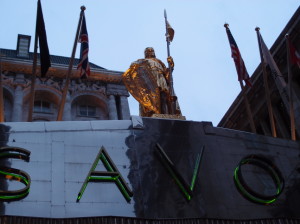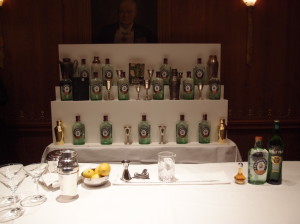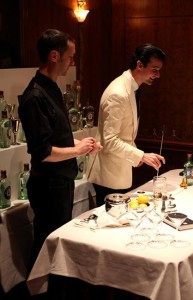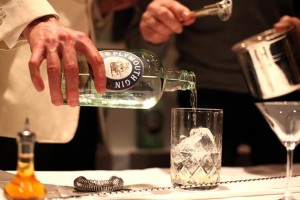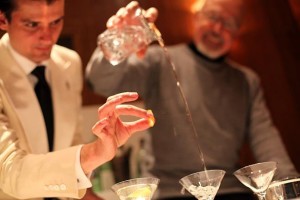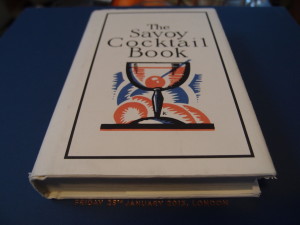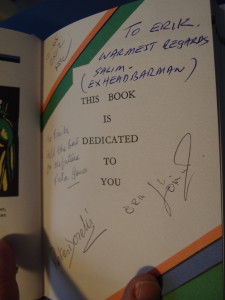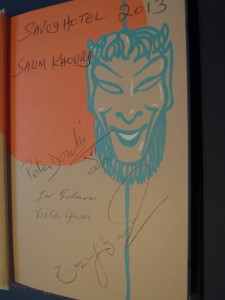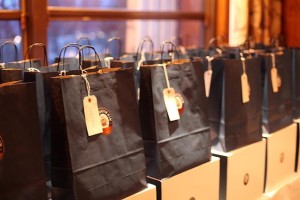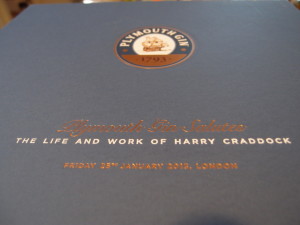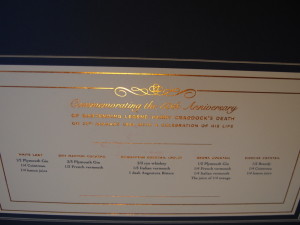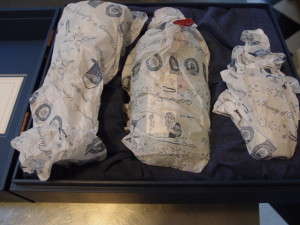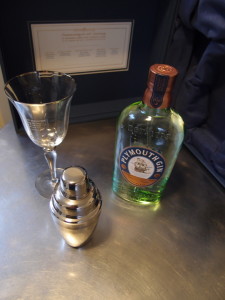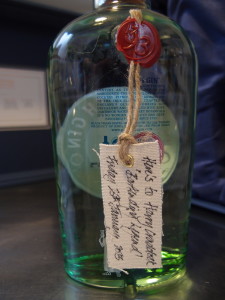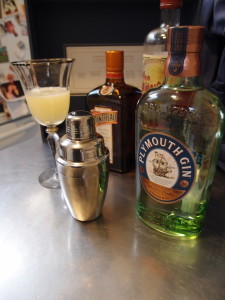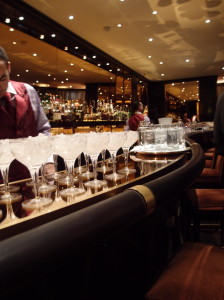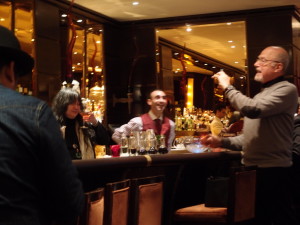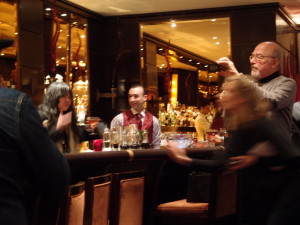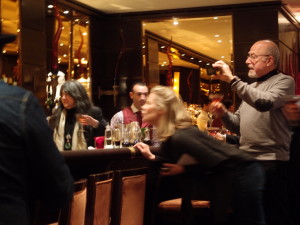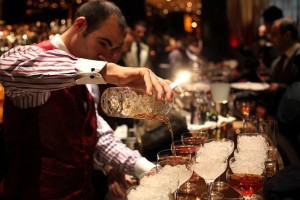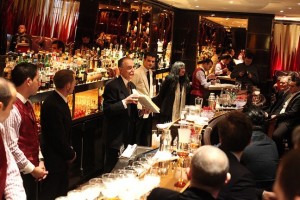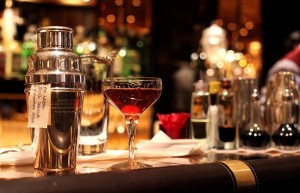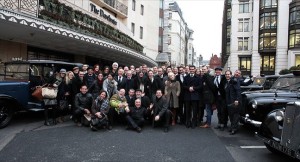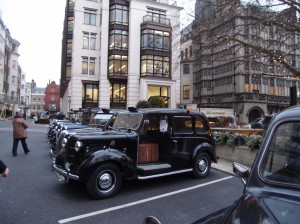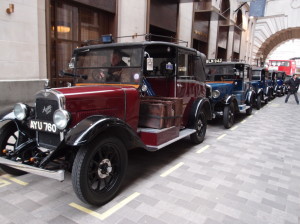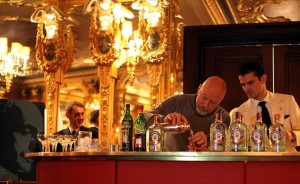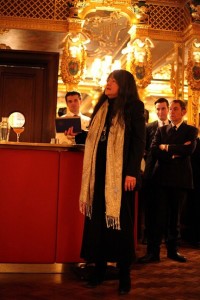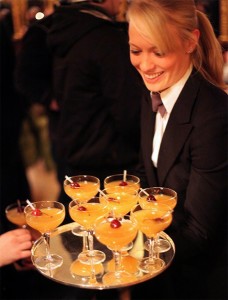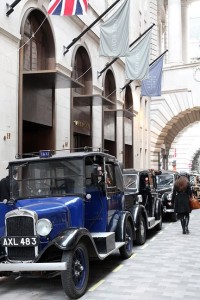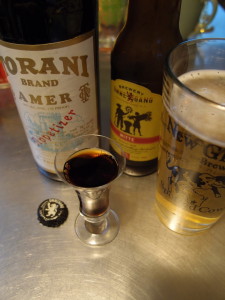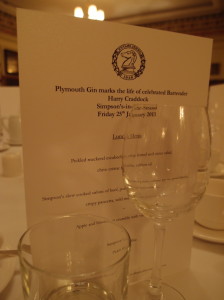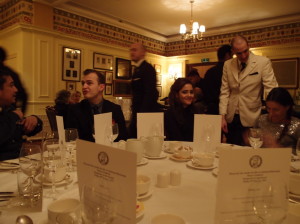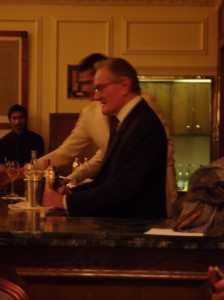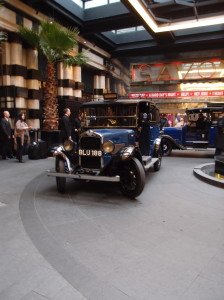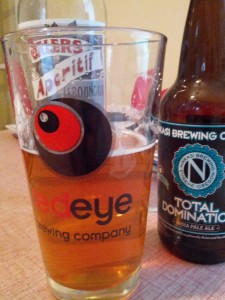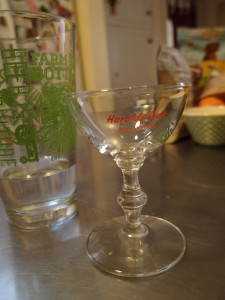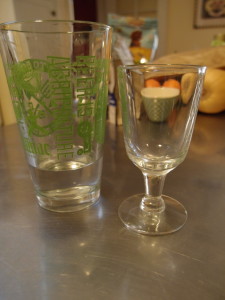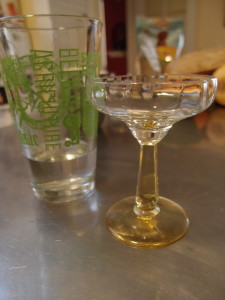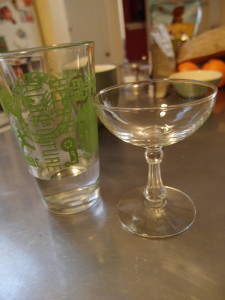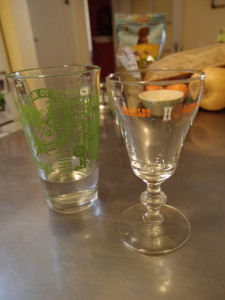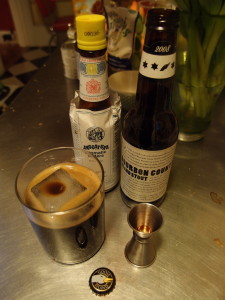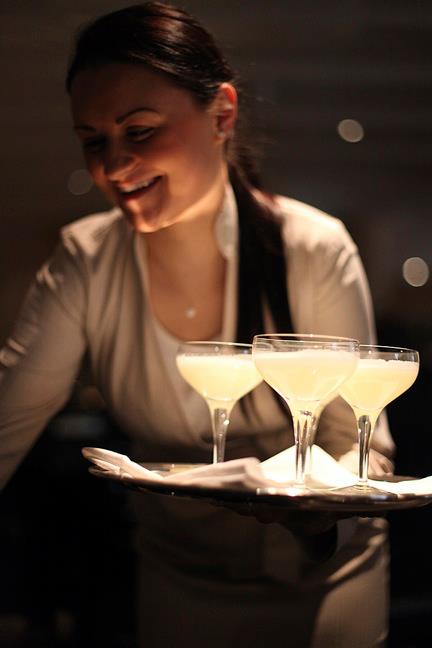Continuing the writeup of the day I spent in London celebrating the life and legacy of Harry Craddock.
Previous Posts:
Robert Burns, The Savoy Hotel, and the White Lady
Simpson’s-in-the-Strand and the Sidecar
Cafe Royal and The Bronx Cocktail
The Dorchester and the Manhattan
—
Our cars returned us to the Savoy Hotel, where under the watchful gaze of Count Peter of Savoy, we are escorted to a room near the back of the hotel.
Huh, seems to be a portrait of Sir Winston Churchill, behind all that Gin. And a statue of him in the corner giving the famous V for Victory hand sign. Wonder what that is about? Lots of famous people and politicians at the Savoy, I suppose.
Maximilian Warner from Plymouth starts, thanking us for coming, what a momentous and meaningful experience it has been for him, highlight of his career. He also explains that this long time in coming party to celebrate the legacy of Plymouth Gin and Harry Craddock, was a going away party for him of sorts, he will be leaving the Plymouth company for parts unknown. He then hands the “Mic” over to Erik Lorincz, to say some words, and make the final cocktail of the day, The Dry Martini. Erik says something cute like, “My hands are shaking too much in this esteemed company, I’d like to invite someone up to help me make this cocktail. Someone whose work has done a lot to popularize both the Savoy Cocktail Book and Harry Craddock’s legacy, Erik Ellestad.” Gulp.
OK, now my hands are shaking far more than Erik Lorincz’! A few questions as we make the cocktail, about the Savoy Cocktail Book Project. I manage to stammer out a couple semi coherent answers, didn’t know I’d be doing any public speaking, and somehow we both, shaking hands and all, manage to get the final cocktail, The Dry Martini, into the cocktail shaker time capsule for posterity.
Public speaking over, and lo, there was much rejoicing, Martinis, and Gin and Tonics.
Just how many Savoy Head Bartenders does it take to make a Martini?
Speaking of Head Bartenders, last year Angus Winchester blew through town promoting Tanqueray Gin, and brought with him a copy of the Savoy Cocktail Book he’d had Erik Lorincz and Peter Dorelli sign. I’d brought it along this day, and surreptitiously had the other Savoy Bartenders sign my copy.
Unfortunately, Joe Gilmore’s illness made it impossible for me to get his signature.
Or did it…
As part of the gift pack, they gave us a new edition of the Savoy Cocktail Book, with an introduction from Erik Lorincz and modern cocktails from the Savoy Bar, but they also had all of the living Savoy Head Bartenders Sign the copies, including Joe Gilmore.
Yes, I suppose I am a Savoy Nerd to get excited about this. Is that a bad thing?
I suppose I should mention, at this point, that one of the features of the tour, was the launch of the new Plymouth bottle in England. I can say without reservations that the people at Plymouth, Beefeater, and apparently, Chivas, along with their parent company Pernod Ricard, have been great supporters of the Savoy Project. I’ve met a lot of good people who work for them, and especially thank Trevor Easter for helping out get me across the pond for this day of celebration.
And the mysterious blue box which accompanied our gift bag, was also very cool.
Included a card with the 5 cocktails we had enjoyed during the course of the day and some wrapped items.
A goblet style glass, a small decorative cocktail shaker, and a bottle of Plymouth Gin in the new bottle.
“Here’s to Harry Craddock ‘Bartender Legend’, Friday 25 January, 2013.”
Finally, I will add a sixth cocktail to the 5, the Corpse Reviver (No 4)…
Corpse Reviver (No 4)
3/4 oz Plymouth Gin
3/4 oz Kina l’Avion d’Or (I’ve been curious how the Kina from Tempus Fugit would work in a Corpse Reviver variation, and I had some in the house. Pretty tasty. I was afraid it would totally dominate, but it behaves itself here and works kind of nicely with the Cointreau.)
3/4 oz Cointreau
3/4 oz Lemon Juice
dash AbsintheShake and strain into a celebratory goblet.
…and raise a glass to Harry Craddock, the Savoy Hotel, and Plymouth Gin.
Cheers!
